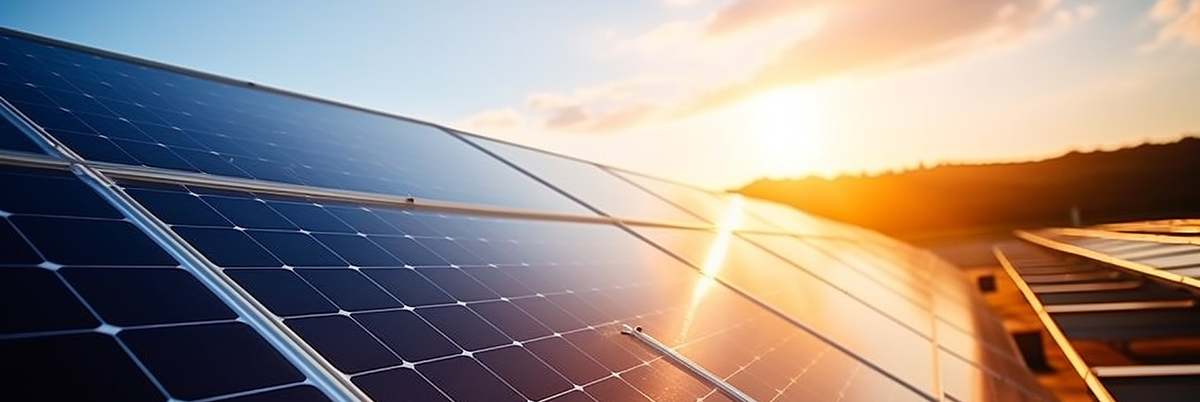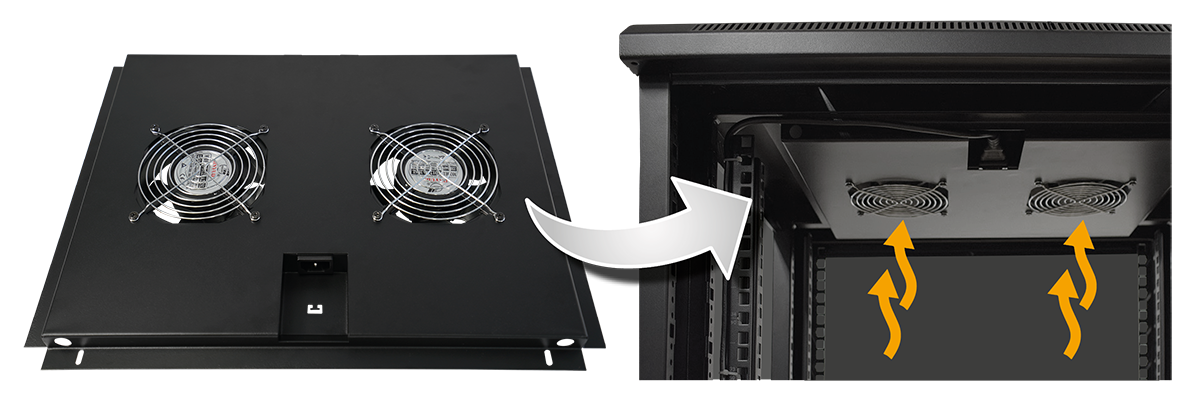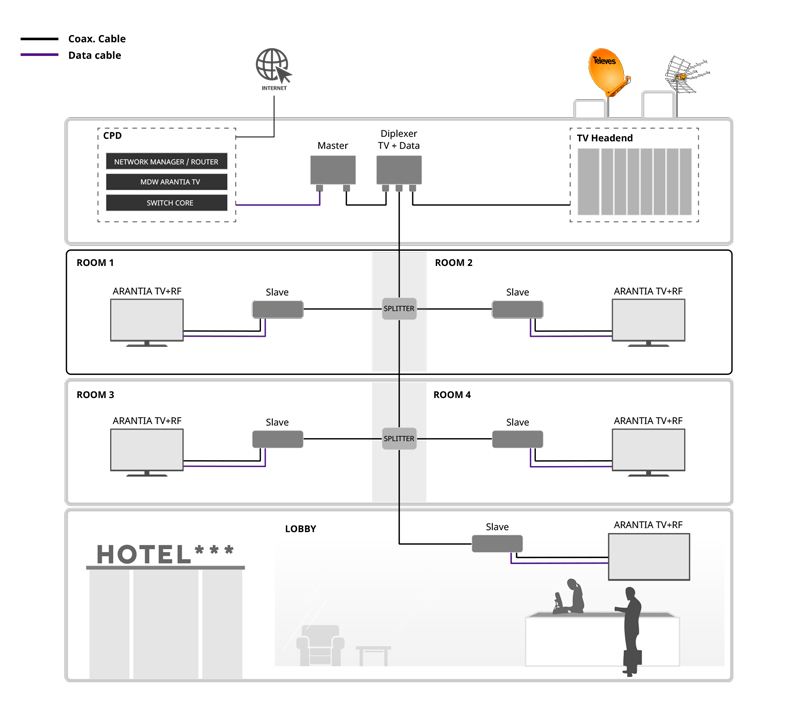Dokumentation
Komplett och uppdaterad service- och produktdokumentation tillgänglig för visning och nedladdning. Välj en kategori för att inleda din sökning.
InfoTeleves 69 (december)
- General Information: Promoting sustainability. Televes leads in the use of clean energy
- Our people: Javier Ruano Managing Director Televes USA
- Televes Corporation: Dr. Peter Dosterschill and the legacy of intellectual property protection at Televes
- Product news: CIES Crosswalk light for crosswalks and low-traffic areas
- Ideas: Use network cables in different colors to easily identify services
- FAQs: Do I need to install fans in my rack?
- Televes facilities: New Terminal at the Abu Dhabi Airport - (United Arab Emirates)
- Televes in the world: AMETIC #Santander37, CEDIA Expo, Sonepar Move 2023, AUNA Partner Day, Hotel Show...
- Training: The importance of the color code in optical fiber
- Don't miss it!: Offer interactive TV to your guests without replacing your traditional TV headend
- Announcement: Filters, mixes, amplifies and balances at the touch of a button
General Information
Promoting sustainability. Televes leads in the use of clean energy
In a world where sustainability has become an inescapable priority, Televes and the companies that make up Televes Corporation have emerged as leaders in adopting clean energy—specifically solar energy—as a powerful tool to carry our operations to a more sustainable future. With a firm commitment to innovation and environmental responsibility, we have achieved significant advances in integrating solar energy at our operating centers.
Televes’ vision goes beyond adopting solar energy as a source of consumption; we are determined to lead the change toward a cleaner, more sustainable world. Currently, the corporation has multiple solar energy installations at our main operating centers, which amount to a total capacity of 730 kilowatts.
The Televes headquarters is a testament to this commitment. Four solar energy installations, with a capacity of 100 kilowatts each, dot the rooftops of our buildings. Two of these installations were recently installed in the R&D center. They generate a real, measurable impact on energy consumption, supplying up to 30% of the center’s energy, with an annual average of around 10%.
And we're not stopping there. Our logistics centers and raw materials warehouse have another two solar installations, with capacities of 100 and 30 kilowatts, respectively. These installations have achieved more impressive results, with peaks of up to 90-100% of the buildings’ energy needs, and averaging around 40% annually.
Other companies in the Televes Corporation are joining this trend. Gamelsa, TRedess, and the compliance assessment lab Ladetel have also taken significant steps in this direction. They have implemented solar installations with capacities of 100, 50, and 50 kilowatts, respectively, leading the way with solar power systems that at their peak can cover up to 75-85% of the total energy required, demonstrating that sustainability is a goal that can be successfully achieved.
There's no more responsible way of raising environmental awareness than by leading with our actions. Our leading position in the industry means we must set an example with specific, measurable actions. The Corporation is determined to continue investing in innovative technologies that promote efficiency and sustainability throughout all of our operations. Each step we take in this direction helps to reduce our carbon footprint and to position ourselves as an example to be followed in terms of adopting responsible business practices.
Our corporate facilities are seeing significant achievements in solar energy consumption, with peaks at some centers of up to 90-100% of energy needs being covered, with an average around 40% annually.
Our people
Javier Ruano Managing Director Televes USA
Professionally trained in the Televes R&D department, Javier Ruano joined the subsidiary in 2010 to strengthen the brand’s image in the U.S. He tells us what the subsidiary is working on.
What would you say Televes USA’s focus is right now?
We're currently prioritizing two issues. On the one hand, reinforcing professional solutions for infrastructures through distributors, operators, and broadcasters for RF distribution, optical fiber, and signal measurement devices. On the other, providing support to distributors and points of sale for antenna products and accessories.
How have the subsidiary and the American market evolved since you joined the team?
We have very little in common with the subsidiary that started out by providing technical support for SAT/QAM transmodulation for the DISH Network. Today, we’ve managed to develop a wide range of products specific to the North American OTA market.
The online market is exploding. What’s the subsidiary's plan to facilitate digital purchases?
We've launched a very intuitive version of our website and we’ve been working for years with the e-commerce side of strategic distributors such as Lowe’s and Menard’s. The next step will be launching our very own e-commerce platform, which will offer our premium TV antennas and a curated selection of OTA accessories. Our goal is to capitalize on the deployment and expansion of NextGenTV/ATSC3.0 and users’ return to DTT when canceling pay television subscriptions (cord cutting).
What do you feel are the company's key values that best fit the American market?
Having a product of proven quality with support that’s very accessible to the customer opens up opportunities for partnerships with larger, structured companies. The way we design and manufacture our products means we have more agility to react to the demands of our partners. Customers greatly value our know-how, both at the head office and on the ground in the U.S.
Tell us how you see Televes USA in the medium and long term.
We're hoping to leverage the image of a mature brand in the professional market to take advantage of our recurring business and our presence in the antenna and accessories market, where our e-commerce platform will be the major catalyst. Additionally, the US subsidiary is well-positioned to be a leader in monitoring and measurement solutions for ATSC 3.0 network operators and SFN solutions. Our push to have a greater presence in organizations such as ATSC, SBE, and NAB will reinforce our role
Televes Corporation
Dr. Peter Dosterschill and the legacy of intellectual property protection at Televes
On September 20, Dr. Peter Dosterschill passed away. He was an eminent intellectual property expert with numerous titles to his name, including a PhD in Engineering from the University of Munich, European patent attorney, Spanish industrial property agent, and German patent agent. At the Max Planck Institute, the University of Santiago de Compostela, Siemens AG, the law firm Bardehle&Partner, and lastly as director of the patent department at Bosch Siemens appliances, Dr. Peter Dosterschill had a brilliant career, which also included many speeches and publications. His death has left a permanent hole in the intellectual property field, and his loss has been especially mourned at Televes.
From our beginnings in 1958, we’ve been a driving force of technological development and innovation. However, our protection of these innovations was not always effective, in part due to a lack of experience in Spain in the field of intellectual property. This made it difficult for us to defend our exclusive use of valuable technologies, such as the SAT 90 satellite, the multi-satellite system, and the PRO45 antenna.
Dr. Dosterschill’s arrival as an intellectual property advisor at Televes marked a significant change. Under his guidance, the company took complete control of the registration process, creating an intellectual property department and making strategic decisions about what, how, when, and where to register patents. This process involved the entire organization, from R&D to production and marketing, with far-ranging analyses and monitoring of innovations on the market, and detecting possible infractions by the competition. The result is tangible and measurable. Over the last 30 years, Televes has generated numerous patents, both European, as well as American and Japanese, in addition to utility models and industrial designs. With Dr. Dosterschill’s help, we’ve won all legal proceedings related to violations of patents or utility models.
Dr. Peter Dosterschill’s legacy at Televes is undeniable. His contribution has allowed the company to excel in the market, driven by innovation and effectively protecting its technological advances. We remember our departed friend warmly and with gratitude.
Rest in peace, Dr. Dosterschill
Product news
CIES Crosswalk light for crosswalks and low-traffic areas
Highly efficient lighting in compact dimensions
In sports, lighting plays a crucial role, not only influencing the safety and performance of participants, but also affecting the overall spectator experience. However, achieving optimal lighting levels can be a challenge, especially in cases where the space available for the facility is limited, negatively affecting sports practice.
Flex Mini floodlights are a lighting solution designed especially for small and medium-sized sports venues. Their compact and self-installable format, with the support integrated into the structure, makes them ideal for areas where space is limited but lighting requirements are high. These floodlights are notable for combining a small, practical size with the ability to provide uniform, glare-free illumination, as well as offering up to 240W of power and a lighting efficiency of up to 144lm/W. Mechanically, its compact size offers very low wind resistance, which, combined with its robust anodised aluminium construction and production on our automated lines, guarantees exceptional durability, even in adverse weather conditions.
These floodlights have been specially designed for sports facilities that require high levels of illumination in a moderate space. From padel clubs, tennis courts and basketball courts to municipal sports complexes, these floodlights deliver professional performance in an efficient and manageable format.
Flex Mini floodlights are a reliable and efficient choice for illuminating small and medium-sized sports venues. They offer a good balance between quality, practicality and durability, satisfying the most demanding lighting needs to offer an optimal experience for the development of sports practice, both for players and spectators
Ideas
Use network cables in different colors to easily identify services
In any telecom infrastructure that consists of a network of copper pair cables, it's common for different services to exist side-by-side. Depending on the nature of the installation, the most common are: Internet, VoIP, CCTV, and IPTV. These services may have their own dedicated cable or be combined in the same cable, through independent VLANs. Thus, each installation is different, and it can get complicated to recognize the different services at the switching point (router, switch, rack, network terminal boxes, etc.), i.e., where service distribution begins.


A good practice for installers and integrators is to link colors to services, and use cables in those colors to identify them visually. It’s a very simple idea, but one that saves a lot of time.
The typical colors used to complement white are: gray, blue, red, and green, which means you can visually identify a total of up to five different services (or sets of services). That’s why these colors can be found in our range of Cat 6 U/UTP network cables, which are also available in different lengths.
FAQs
Do I need to install fans in my rack?
Yes, whenever a rack is used to house active equipment that uses electricity, a forced ventilation system must be installed. This allows the heat generated by electrical components to be dissipated, with an appropriate range of temperatures maintained. A rack without ventilation would act like a closed box, with the heat generated by the equipment accumulating inside and causing the internal temperature to rise.
Many racks include passive ventilation as part of their structure. This consists of a series of holes or slots in the solid covers found on the top and bottom of the rack’s frame. These openings allow air to circulate through the structure and out of the rack, by the process known as natural convection.
However, in any situation where active equipment is operating with electricity, this passive form of ventilation may not be sufficient, so adding one or more fans to your system is highly recommended.
Televes facilities
New Terminal at the Abu Dhabi Airport - (United Arab Emirates)
With a capacity of 45 million people and 11,000 passengers per hour, the new terminal offers a fluid biometric travel experience, from check-in to take off.
Televes supplied the airport with an IPTV solution that integrates and distributes the different management programs across all viewing points, with informational or commercial content, weather information, radio, and much more.
The Televes package of solutions includes an IPTV headend to receive digital services that allow streaming through the network, a middleware server to offer interactive television, a VoD server that allows audiovisual content to be designed through the deployed TVs, as well as set-top boxes that receive and process the IPTV channels on the different screens.
This solution is flexible and scalable to keep pace with the airport's growth, like the emergency alert system, which can be shown on the TVs with a customized message for each event.
Televes in the world
AMETIC #Santander37, CEDIA Expo, Sonepar Move 2023, AUNA Partner Day, Hotel Show...
AMETIC #Santander37 (Santander, Spain) August 30 - September 1
Our general director of strategy gave a speech offering Televes’ perspective on cities’ sustainability challenges, and how a connected building can meet the demands of digitalization processes.
CEDIA Expo (Denver, Colorado, USA) September 5-7
Our subsidiary in the U.S. participated with a large stand to present our advanced solutions for building connectivity, with a special emphasis on OTA solutions with our intelligent antennas.
Sonepar Move 2023 (Berlin, Germany) September 20-21
Our subsidiary Televes Deutschland had the opportunity to exchange opinions as a #businesspartner with all the members of the Sonepar team. The event was well executed and had a fun format to strengthen ties and make progress together.
AUNA Partner Day (Donostia, Gipuzkoa, Spain) September 14
Francisco Pérez, Hugo Botas, Eduardo Tobar, Carlos Galíndez, and Víctor Fernández presented the new technological advances of SmartKom, the CIES lighting range, integral DataCom structured cable solutions, and much more.
Hotel Show (Riad, Saudi Arabia) September 17-19
Three intense days for David Goldar and the team from the Televes Middle East subsidiary. Thank you to everyone who visited our stand and showed interest in our hospitality solutions.
Sonepar Customer Summit (Batalha, Portugal) September 20
David Cerqueiro and the Televes Portugal team presented new features in the professional LED lighting and DataCom ranges.
Independent Hotel Show (Miami, Florida, USA) September 20-21
The only event in the industry dedicated entirely to boutique and luxury hotels. David Serramià was at our stand explaining how to improve guest entertainment and connectivity technology for a hotel experience that’s even better than home.
4º encuentro COELCA-UNE (Las Palmas de GRAN Canaria, Canary Islands, Spain) October 5
We had the opportunity to share experiences with teachers and students from electricity and electronics vocational training programs, as well as students from the industrial engineering department at the ULPG and architects’ associations. Our colleague Eladio Santiago, director of the Canary Islands office, led the Televes activities.
Feria MEB (Vicenza, Veneto, Italy) October 7
Our colleague Marco Colmagro had the chance to explain the different areas of knowledge where Televes can offer installers products and solutions to digitalize buildings and cities.
SCTE Cable Tech Expo (Denver, Colorado, USA) October 16-19
Training
The importance of the color code in optical fiber
How to identify the types of connectors and adapters and understand their compatibilities
Choosing the type of fiber, connectors, and adapters is a decision that every fiber installer must make for each type of installation. If there is existing optical equipment, its specifications and connectors will determine that decision, as the technologies and connections must be compatible.
The connection is usually the most confusing part, as optical connectors do not necessarily have to be the same to be compatible. To understand this, we need to know that an optical connector consists of two properties: the mechanical part of the connector, and the polish type of the internal fiber that it includes. At the mechanical level, two connectors are compatible if and only if both connectors are of the same type (SC, FC, LC, ST).

On the other hand, in terms of polish type, connectors can be compatible without being the same. In fact, an APC polish type requires an APC polish (both at an angle), but PC and UPC can be mixed (both flat polish types).

The color code for adapters
Fiber adapters consist of two female ends, which allow two male fiber connectors to be connected. There are different types of adapters depending on the mechanical connection they offer (SC, FC, LC, ST), which may be different on each end. Thus, there are adapters that join two connectors that are mechanically the same, but there are also adapters that join two connectors of different types.
The polish type does not apply to these female adapters, since they only join two male connectors mechanically. Therefore, it is the connectors that determine the polish type, and it is essential that they be compatible.

Don't miss it!
Offer interactive TV to your guests without replacing your traditional TV headend

Sometimes we hear from hotels that want to implement a new interactive TV service, but they don’t want to replace their traditional TV headends.
In the latest update to the Arantia TV service, a new feature has been added that can transmit RF channels to a hotel’s rooms using this type of headend. This provides a very beneficial solution in these scenarios, by making it possible to implement a Arantia TV service over the existing infrastructure with no need for a new cable network or extensive and costly installation work.
There are different real-world applications, including:
-
Implementation of Arantia TV on a traditional coaxial network + Wi-Fi

-
Implementation of Arantia TV on a traditional coaxial network + structured cable

This new feature also offers other benefits, such as simple configuration using the Arantia TV management tool, which allows addition of RF channels from DVB-T/T2 and DVB-C sources to the list of channels on approved Samsung Tizen and/or LG televisions*, jointly with other sources of IP channels.
*Check compatible TV models
Announcement
Filters, mixes, amplifies and balances at the touch of a button






















